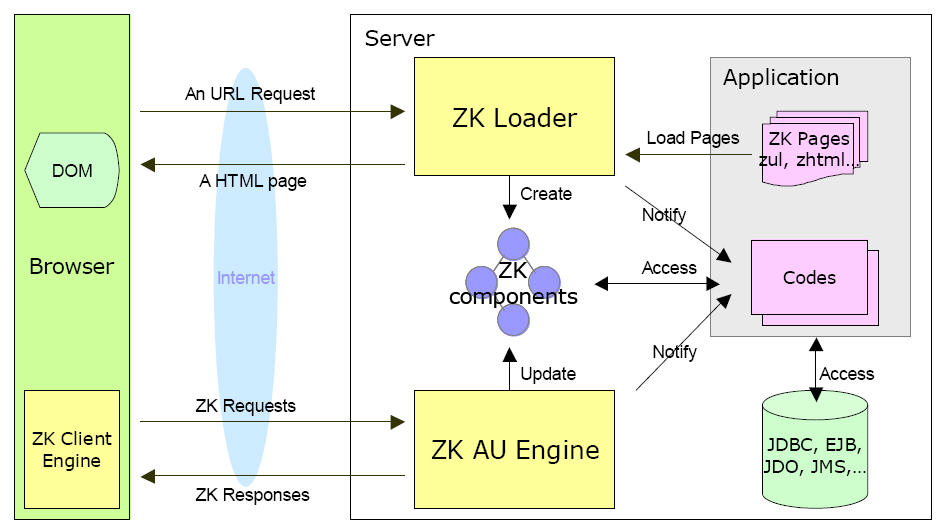ZK includes an AJAX-based mechanism to automate interactivity, a rich set of XUL-based components to enrich usability, and a markup language to simplify development.
The AJAX-based mechanism consists of three parts as depicted below: ZK loader, ZK AU Engine[17] and ZK Client Engine.

Based on the user's request, the ZK Loader loads a ZK page, interprets it, and renders the result into HTML pages in response to URL requests. A ZK page is written in a markup language called ZUML. ZUML, like HTML, is used to describe what components to create and how to represent them visually. These components, once created, remain available until the session is timeout.
The ZK AU[18] Engine and the ZK Client Engine then work together as pitcher and catcher. They deliver events happening in the browser to the application running at the server, and update the DOM tree at the browser based on how components are manipulated by the application. This is so-called event-driven programming model.